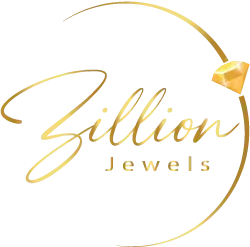Clasps, Fig 8’s, and Tabs: Repair and Maintenance for Jewelry Fastenings
Clasps, Fig 8's, and Tabs are types of closures used on necklaces, chains, and bracelets to secure them in place. Clasps are the most common type of closure, and they come in a variety of shapes and sizes, including lobster, spring ring, toggle, and magnetic. Fig 8's are a type of clasp that has an oval shape with two loops at the top and bottom that interlock to secure the closure. Tabs, also known as end tabs, are the flattened metal pieces that attach to the end of a necklace or chain and are used to secure the clasp.
When repairing jewelry with these types of closures, the process can vary depending on the specific issue. If a clasp is damaged or not closing properly, it may need to be replaced. The same is true for Fig 8's and Tabs. In some cases, it may be possible to repair a damaged closure by adjusting or replacing the mechanism that holds it in place.


Clasps, Fig 8's, and Tabs are types of closures used on necklaces, chains, and bracelets to secure them in place. Clasps are the most common type of closure, and they come in a variety of shapes and sizes, including lobster, spring ring, toggle, and magnetic. Fig 8's are a type of clasp that has an oval shape with two loops at the top and bottom that interlock to secure the closure. Tabs, also known as end tabs, are the flattened metal pieces that attach to the end of a necklace or chain and are used to secure the clasp.
When repairing jewelry with these types of closures, the process can vary depending on the specific issue. If a clasp is damaged or not closing properly, it may need to be replaced. The same is true for Fig 8's and Tabs. In some cases, it may be possible to repair a damaged closure by adjusting or replacing the mechanism that holds it in place.
For necklaces and chains, the size of the closure and end tabs is an important consideration when repairing or replacing the closure. The size of the closure needs to match the width of the necklace or chain, while the end tabs need to fit securely and snugly over the chain ends. Jewelry repair professionals can help ensure that the replacement closure and end tabs are the correct size and type for the piece of jewelry being repaired.
TEKNIK - Home Security
Frequently Asked Questions
What are the common types of jewelry fastenings?
Common jewelry fastenings include clasps, figure 8's, and tabs. Clasps are mechanisms used to secure the ends of necklaces, bracelets, and chains. Figure 8's are connectors shaped like the number 8, often used in earrings and chains. Tabs are flat, extended pieces that provide a surface for connecting and securing different components.
How do I prevent my jewelry fastenings from becoming damaged?
Avoid exposing your jewelry to extreme conditions, such as chemicals, moisture, or excessive heat. Remove your jewelry before engaging in activities that could put stress on the fastenings, such as heavy lifting or intense physical activities.
How do I maintain my jewelry fastenings to prevent damage?
Regularly clean your jewelry with a soft brush or cloth to remove dirt and oils. Store pieces separately to prevent scratching, and avoid exposing them to harsh chemicals or extreme temperatures. Additionally, periodically check the fastenings for any signs of wear or damage.
How do I know if my jewelry fastening needs repair?
Signs of a faulty fastening include difficulty in opening or closing, loose connections, visible damage, or a weakened grip. If your jewelry doesn't stay securely fastened, it's a clear indication that repairs may be necessary.
What are the common types of jewelry fastenings that may require repair or maintenance?
Jewelry fastenings come in various types, but commonly encountered ones include clasps, figure 8's, and tabs. Clasps are mechanisms that secure the ends of a piece of jewelry, while figure 8's and tabs are specific types of connectors used in chains and bracelets.


